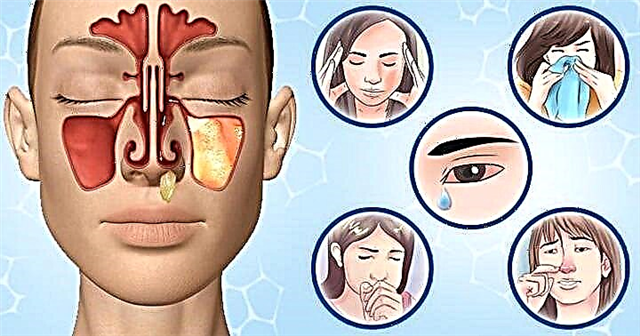Among all rhythm disturbances, ventricular extrasystoles are the most dangerous and often accompany pathologies associated with heart disease. The diagnosis of this deviation is based on the results of the ECG. I propose to analyze in more detail the question of what happens with the development of sudden excitement in the myocardium and how the treatment of ventricular extrasystole is carried out.
What it is
Sudden contractions of the left or right ventricles of the heart are associated with the appearance of foci of excitation in the Purkinje fibers or in the distal areas after the branching of the bundle branch. This phenomenon can be observed in severe diseases of the heart muscle caused by intoxication, overexcitation, congenital features of the cardiac conduction system.
Single ventricular extrasystoles are observed normally in perfectly healthy people. They usually do not manifest themselves clinically and do not require special treatment. Their number increases with age.
Causes of occurrence
To understand the etiology of the appearance of such arrhythmia, it is most convenient to present all factors in the form of a table:
Kinds | Cause | How to suspect |
Organic |
| In the first place are the symptoms of the underlying pathology, extrasystole acts as a complication. |
Extracardiac |
| Study of anamnesis, checking the work of internal organs, study of the ionic composition of blood, ultrasound and X-ray diagnostics. |
Functional |
| A clear connection between the development of arrhythmia after exposure to a provoking factor, the absence of organic changes. |
Idiopathic | There is no connection with the disease and other factors | Only with the help of ECG and Holter monitoring. |
For any disease, the only examination that will clearly show the presence of additional ventricular contractions is electrocardiography. If it is not possible to register a deviation during ECG recording, then a special device is used that records the activity of the heart for a specified time.
Symptoms and manifestations
Most often, single extrasystoles appear without clinical symptoms. According to statistics, interruptions in this case develop in 30% of patients, and about 7% believe that this phenomenon significantly worsens their well-being. The patient's complaints at the time of the onset of arrhythmia are as follows:
- heart sinking, tremors and interruptions;
- dizziness and general weakness;
- shortness of breath, shortness of breath;
- volley and frequent ventricular extrasystoles can cause pain against the background of an ischemic attack, impaired consciousness.
I often noticed that additional contractions of the myocardium of functional origin often cause vivid symptoms. But violations against the background of organic changes of a chronic nature are not perceived, as if a person gets used to them.
Classification and types
There are several types of classifications to determine the type of a given arrhythmia. They are important for establishing the cause of the pathology, accurate diagnosis, treatment approach and further prognosis.
According to the frequency of occurrence, such ventricular extrasystoles are distinguished:
- rare (less than 5 per minute);
- medium frequency (up to 16 / min);
- frequent (16 or more).
By density:
- single;
- paired;
- group.
By localization:
- right ventricular;
- left ventricular.
By localization of excitement:
- monomorphic (arise from one focus, have the same form on the ECG);
- polymorphic (different places of origin, complexes differ markedly during registration).
By the rhythm of appearance:
- bigeminia (every second contraction is an extrasystole);
- trigeminia (every third);
- quadrigeminia (fourth);
- sporadic (excitement without a clear sequence).
According to the degree of danger, there are the following classes:
- Benign ventricular extrasystoles. They arise in the absence of damage or hypertrophy of the myocardium, their frequency does not exceed 10 per hour, and are not accompanied by impaired consciousness.
- Potentially malignant. Against the background of left ventricular dysfunction, with a frequency of 10 or more per minute. No fainting or cardiac arrest.
- Malignant. Frequent, polymorphic and polytopic, against the background of significant deviations (ejection fraction of 40% or less), pass into stable ventricular tachycardia. The medical history contains a description of impaired consciousness and / or cardiac arrest.
Ryan Graduation
Until now, my colleagues and I use the classification of ventricular extrasystole (PVC), proposed by M. Ryan in 1975, it is intended for patients who have a history of myocardial infarction. According to this gradation, the following degrees of arrhythmia development are distinguished:
Stage | Description of extrasystoles |
0 | There are no episodes of sudden contractions |
1 | The number does not exceed 30 per hour, monotopic |
2 | More than 30 extrasystoles in 60 minutes, monotopic |
3 | Multi-focal, frequent |
4a | Paired monotropic |
4b | Polymorphic, paired and group with shimmer and flutter |
5 | Early, burst, polymorphic, turning into paroxysm of ventricular tachycardia |
Particularly severe consequences for the patient's life are early ventricular extrasystoles. They occur at a time when the active phase of depolarization occurs, preventing the heart from relaxing for the next contraction.
Diagnostics
Diagnosis of rhythm disturbance is based on standard methods. First, the cardiologist or therapist conducts a survey, identifying the main complaints of the patient. Examination and auscultation help to detect signs of heart failure, to suspect a problem of the valve apparatus.
ECG and Holter monitoring
The most effective technique that allows you to accurately determine the violation of the heart rhythm by the type of ventricular extrasystole is an electrocardiographic study. But it cannot 100% identify the problem, since at the time of taking an ECG, additional excitement does not always arise.
If it is necessary to establish a diagnosis, daily monitoring is used, which is called Holter's. It helps in identifying any type of arrhythmia, especially if the deviation is transient. After recording the electrical activity of the heart, it becomes possible:
- to clarify the number and morphology of ventricular complexes;
- dependence of their appearance on physical activity or other factors;
- fix changes depending on sleep or wakefulness;
- make a conclusion about the effectiveness of drug therapy.
Electrocardiographic signs
On the ECG, ventricular extrasystole is manifested in this way:
- The emergence of an extraordinary QRS complex. It is characterized by the absence of an atrial tooth, expansion and deformation. In this case, T has the opposite (discordant) direction. Most often, it is followed by a complete compensatory pause (isoline).
- Extrasystoles from the left ventricle are characterized by a high and wide R wave, as well as a deep negative T trail in lead III, aVF, V1 and V2, as shown in the photo. At the same time, there is a deep and wide S, high T in I, II, aVL, V5 and V
- Complexes from the right ventricle present the opposite picture, + R and –T will be in I, II and left chest leads. Negative R and positive T - in the right leads and aVF, the changes are clearly visible in the photo.
- There are interpolated (insertion) extrasystoles. On the cardiogram, they look like a deformed QRS complex, which is inserted between two normal contractions and does not have a compensatory pause. Often this phenomenon accompanies bradycardia, as can be seen in the photo.
More details on the electrocardiographic signs of extrasystoles can be found here.
Treatment
The tactics of treatment after the detection of ventricular extrasystoles depends on the presence of other diseases, symptoms, threatening types of rhythm disturbances. In the absence of complaints and the identification of rare pop-up complexes, special therapy is not required. A person is advised to give up caffeinated drinks, exclude alcohol and smoking.
If seizures are clinically symptomatic but benign and hemodynamic, beta-blockers are the drug of choice. Sometimes Valocordin or Corvalol helps to stop the attack. In some cases, the problem is solved with the help of Phenazepam.
Some specialists use class I antiarrhythmics in this case. But recent research confirms the failure of this choice. It is especially dangerous to give these funds in the presence of cardiac ischemia or during active myocarditis. The mortality rate of patients with the use of these drugs increases 2.5 times.
In case of malignant extrasystole, the patient is placed in a hospital, where the following means are used:
- Amiodarone - used alone or in combination with beta-blockers (Concor). This can significantly reduce the likelihood of death in patients with impaired cardiac blood flow. Treatment is carried out under the control of the size of the Q-T interval.
- If Amiodarone is ineffective, Sotalol is used.
- If the problem is caused by an imbalance of electrolytes, then the patient receives potassium chloride or magnesium sulfate.
Treatment for a benign course continues for several months under ECG control, then a gradual withdrawal of antiarrhythmic drugs is recommended. Malignant pathology requires longer therapy.
How to relieve an attack
Frequent ventricular premature beats are often observed in the first hours and days of acute myocardial infarction. It is dangerous by the development of fibrillation and requires immediate relief. For this, the following algorithm of actions is used:
- Intravenous administration of lidocaine in a stream, followed by a transition to drip.
- In the absence of a result, they switch to Novocainamide or Etacizin.
- If there is a rapid heartbeat, beta-blockers and Cordaron are used.
- With extrasystoles against the background of bradycardia, it is better to use Etmozin or Ritmilen.
- It is undesirable to combine antiarrhythmic drugs. This should be done only if absolutely necessary.
A detailed description of the use of drugs for the relief of extrasystole is here.
When is it necessary to do the operation
The indication for an operation with this arrhythmia is the detection during daily monitoring of at least 8,000 extraordinary contractions throughout the year. In this case, the patient is recommended to carry out radiofrequency ablation (RFA).
The essence of this technique is that a catheter is inserted into a large-caliber vessel (this can be a vein under the collarbone or in the thigh area) into the patient, which is carried out under the control of the equipment to the very heart. Then a radiofrequency pulse is applied to the place of pathological excitation (burning). I would like to note that such manipulation usually goes well, its efficiency is 90%.
Case from practice
A patient came to see me with a feeling of interruptions in the heart, during the attack, the extremities became cold, the pressure increased to 150/95 mm Hg. Art. There is no history of cardiac pathology. Indicates a deterioration in the state of arrhythmia during exercise and alcohol intake. The ECG showed no deviation; after Holter monitoring, episodes of burst extrasystoles from the right ventricle were found. After the appointment of sedatives and a beta-blocker (Bisoprolol), the patient was discharged two weeks later with improvement.
Expert advice
Detection of ventricular extrasystoles on an ECG is not yet a sign of a serious problem and does not require special treatment. Rhythm disturbances of a functional nature are often accompanied by symptoms that do not correspond to the severity of the condition. To eliminate them, it is enough to remove alcohol from the diet, quit smoking and the consumption of caffeinated beverages. Of the drugs, you can drink valerian tincture, Corvalol.
When extrasystole is accompanied by coronary artery disease or other disorders, it is necessary to immediately contact a cardiologist and undergo a full examination. All drugs should be taken on schedule and in no case should be canceled on your own.



